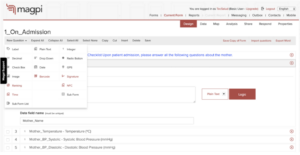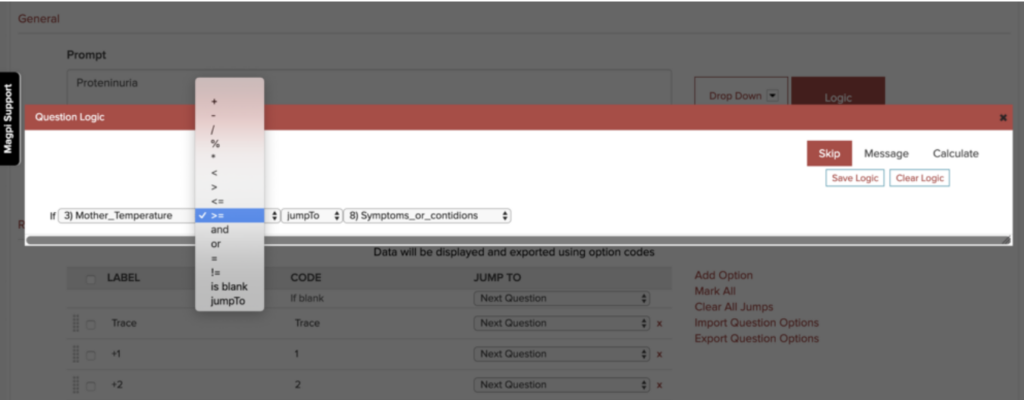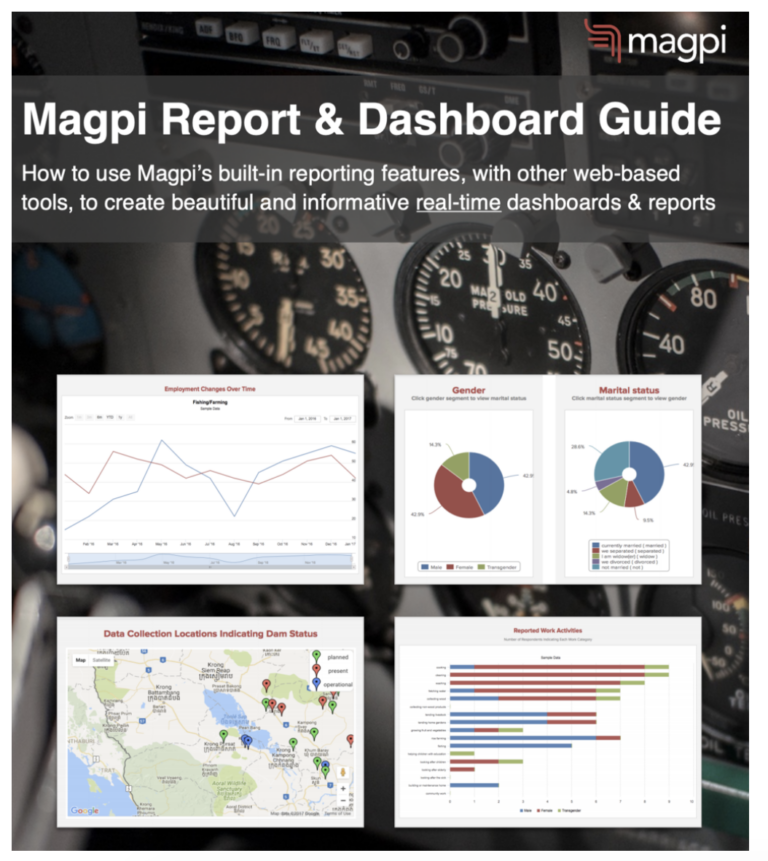Two members of the TecSalud team, an engineer and a designer reviewed 3 of digital development’s highest ranked data collection platforms to see how they match up. Read more about the face off and our score categories in the intro blog.

Magpi is a great tool for one-time surveys, with a big advantage of being the only tool of the three that works on Apple iOS. It has the best data visualization capabilities which enable users to conduct in-depth analysis, customize their own dashboards, and embed maps. However, even though Magpi’s application builder is very intuitive, we found that it didn’t perform as well when we added logic to our application. We even came across a number of technical issues and limitations with logic programming which you encounter along the way through trial and error.
Product Orientation Score: 3/5
User Friendly and Intuitive: Magpi’s user interface is friendly, including the list of question types and options related to the application builder. But if you have a question, there are no apparent direct support channels to guide you. The platform itself is intuitive to use. It has a clear layout that lets you see the basic values and logic in the question frame.
Not Enough Support Material: Magpi has a support tab that provides some basic introduction materials, including video tutorials, start guides, and FAQs. It also provides a support forum to help users find answers to more specific questions — however, we found that you have to take your time in navigating through all of the topics to find a related solution. We couldn’t find any tutorials to help guide us through our first app building experience, nor any tutorials about more advanced topics. There is a “Request Support” option where you can write to the developers to find answers, but it is not an immediate solution while you’re in the middle of building the app.
No Application Simulator: Magpi does not have a phone simulator. The only way to see your progress is to directly download the App on your phone and test it.

Primary Features Score: 3.5/5
Free Version: Magpi’s free version supports most types of questions, although there are restrictions related to using images and signatures. The free version also limits the number of questions and forms in your application, although this shouldn’t be an issue for simple surveys. You can learn more about Magpi’s pricing tiers on their pricing page.
Formatting Is Not Too Flexible: You cannot add images, icons, or multimedia to your Magpi application, nor can you format text in label questions. You can display help messages, however, these require special programming on the backend.
One-Time Surveys: Magpi is designed to develop one-time surveys and does not allow to link data in different forms. This presents a problem if you’re trying to track specific people or objects of interest over time, since it will require re-inputting data.

Logic Score: 3.5/5
Easy Programming of Basic Logic: Magpi’s logic user interface is designed for junior developers and people with little technical knowledge. This is done by using a set of “if… then…” visual structures organized as a dropdown menu, allowing users to pick from several logic options.
Limited Logic Operations: There are several logic limitations in Magpi. For example, you cannot set complex logic involving more than one previous question. Skip logic is not as intuitive because you have to refer to and set parameters in the previous question. Magpi is limited to pre-determined structures for building questions and does not support more advanced logic design. While using dropdown menus to write logic is useful for beginners who have little to no technical experience, it can be limited and time-consuming for more technical users.

Mobile Experience Score: 3.5/5
Mobile Devices: Magpi works with Android, IOS, Symbian, and Java systems.
Appearance and Usability: The Magpi app shows all questions in a single screen. Users can scroll through all questions and can answer them in any order. This becomes problematic if you have mandatory questions or questions with logic since any alerts only appear when you are about to submit your survey. We also found that Magpi doesn’t run as smoothly if an application has a lot of logic — at times the app freezes or you may even experience an occasional error message. The major plus is that it WILL run on iOS, a big limitation of the other tools.

Reporting and Data Visualization Score: 4.5/5
Downloading Data: Magpi has a really easy interface to download your data. The interface is simple and lets you choose what format or type of file you want to use when exporting your data. Some new variables are added to help with future analysis, such as date of register and the user who made the changes.
Best Built-In Data Visualization: Magpi’s Reports and Dashboards are great when it comes to visualizing data. They support real-time graphs, charts, and other graphical aids that you can customize to help you see the information in a clear and useful way. Your dashboard can have as many charts and graphs as you need, as well as the possibility of embedding maps, videos, slide-shows, calendars, and more, which can be organized in any layout of your choice.
You can download the Magpi Report and Dashboard Guide to learn how to use it. Unfortunately the guide (and functionality!) is only available for paid users.

Want to see how Magpi stacked up against other data collection tools?
Check out our introductory blog, or read our reviews of SurveyCTO and CommCare.
Having trouble choosing a tool? Contact Us!





